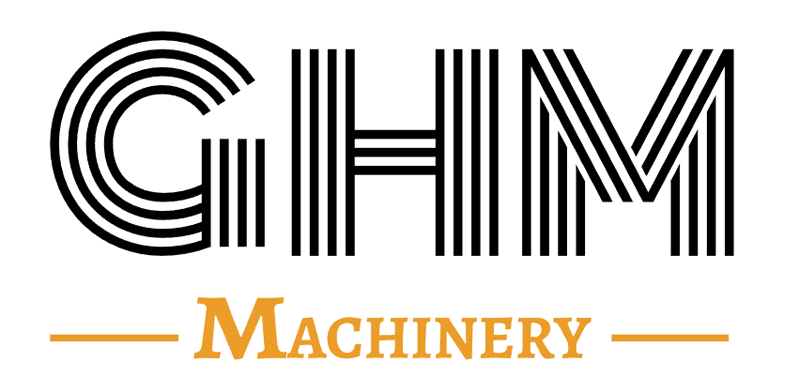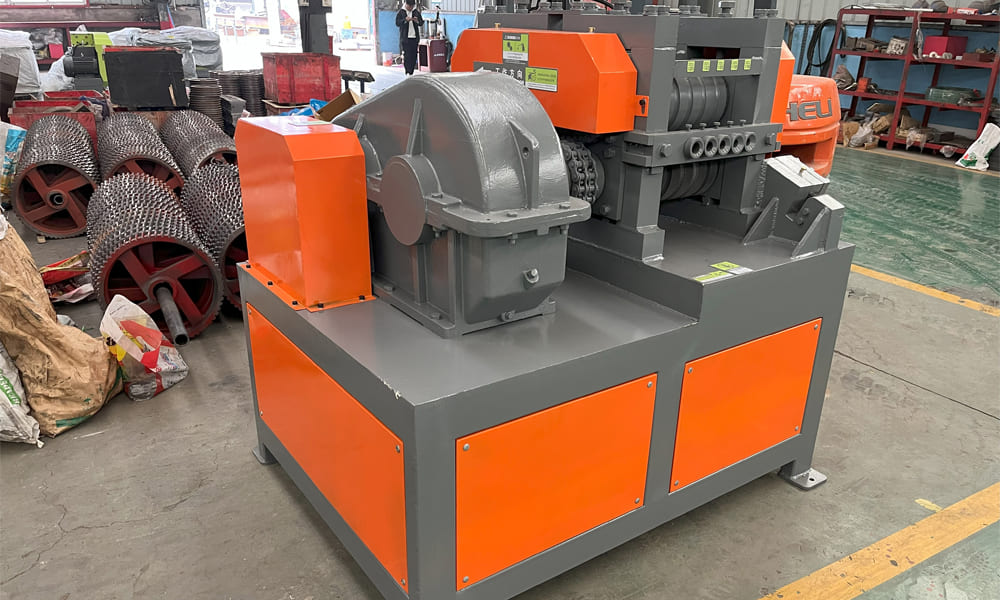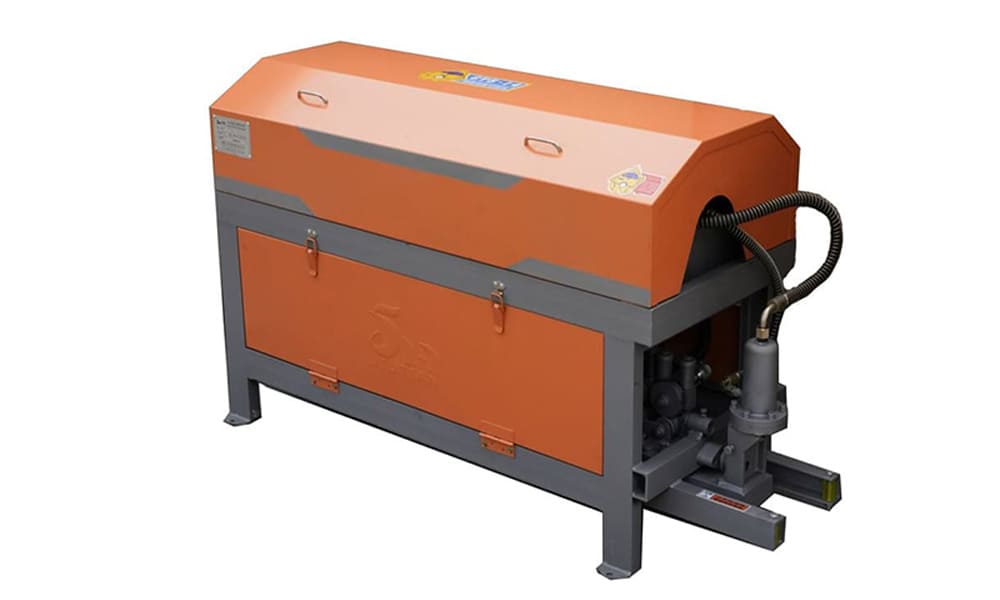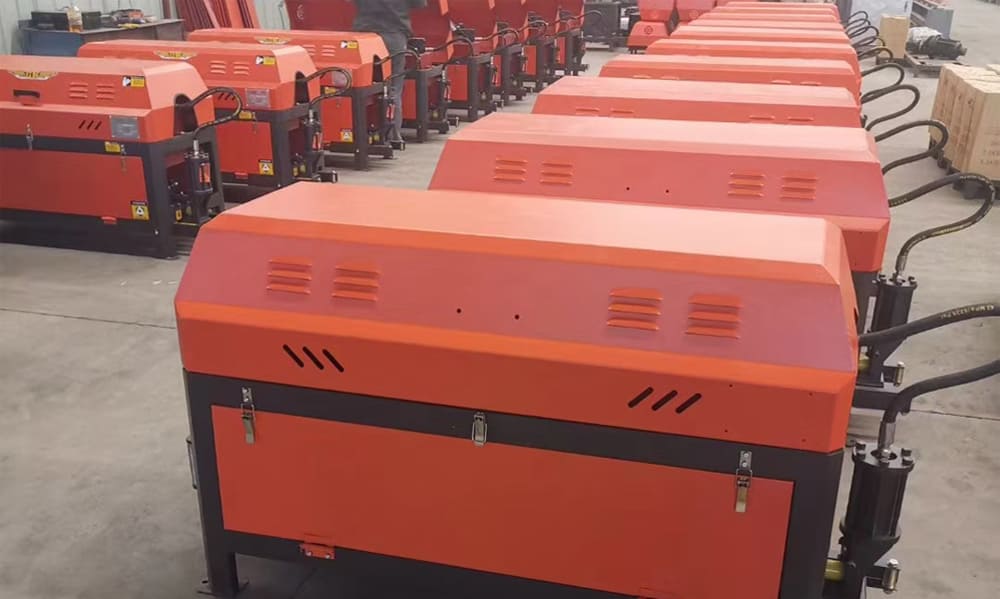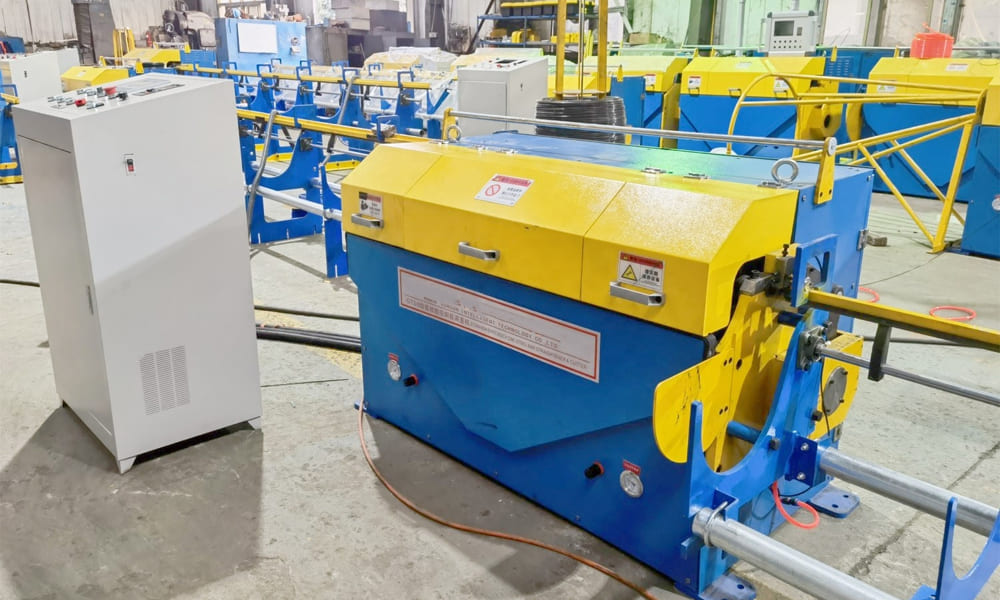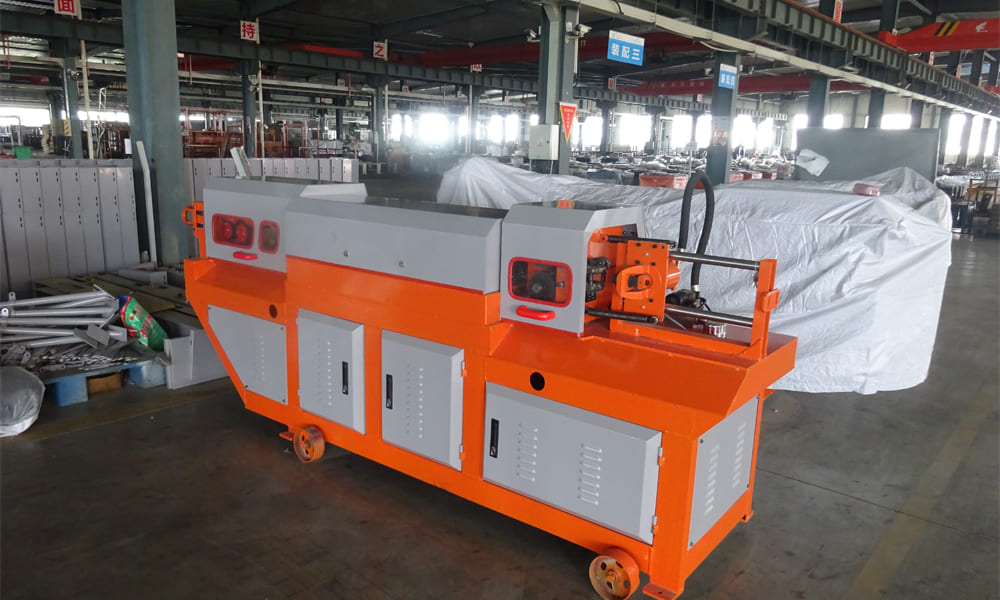In the construction and recycling industries, scrap steel straightening machine play a crucial role in restoring bent and deformed steel bars for reuse. However, the market offers a wide range of machines with significant differences in quality, performance, and pricing. This article provides a detailed comparison between high-quality and low-quality scrap steel straightening machines based on key factors such as motor power, reducer performance, roller system, overall dimensions, and lifespan.
1. Motor Power Comparison
High-Quality Scrap Steel Straightening Machine:
- Equipped with 7.5kW-15kW high-power motors.
- Uses copper wire winding for higher efficiency and lower heat generation.
- Designed with a power margin to support continuous operation without overloading.
- Features renowned motors from brands like Siemens and ABB or top domestic manufacturers.
Low-Quality Scrap Steel Straightening Machine:
- Typically uses motors with power below 5.5kW.
- Often built with aluminum wire or refurbished motors, leading to higher energy loss and overheating.
- Operates close to power limits, increasing the risk of burnout.
- Uses unbranded or second-hand motors, reducing reliability.
2. Reducer Model and Performance Comparison
High-Quality Equipment:
- Uses professional gear reducers from brands like SEW and Flender.
- Manufactured with high-grade alloy steel (e.g., 20CrMnTi) for enhanced durability.
- Features carburized and hardened gears with HRC58-62 hardness.
- Equipped with premium bearings from SKF or NSK.
- Achieves up to 96% transmission efficiency for smooth operation.
Low-Quality Equipment:
- Employs ordinary worm gear reducers or low-cost gearboxes.
- Uses basic 45# steel gears without proper heat treatment.
- Fitted with low-end domestic bearings, leading to faster wear.
- Only achieves about 85% transmission efficiency, resulting in energy loss and frequent malfunctions.
3. Roller System Comparison
High-Quality Equipment:
- Features roller diameters between 180-250mm.
- Constructed from GCr15 bearing steel with hardness levels of HRC60-62.
- Precisely ground surfaces with roughness below Ra0.8 for smooth operation.
- Uses double-row roller bearings for greater load capacity and durability.
- Equipped with a precise adjustment mechanism for fine-tuned pressure control.
Low-Quality Equipment:
- Roller diameters range from 120-150mm.
- Made from standard 45# steel or cast iron, lacking necessary hardness.
- Rough surfaces, often only turned without grinding.
- Uses basic deep groove ball bearings, increasing failure rates.
- Simplified adjustment mechanisms lead to poor pressure control and inconsistent results.
4. Overall Size and Weight Comparison
High-Quality Equipment:
- Dimensions: 1.7-2.5 meters (L) × 0.8-1.2 meters (W) × 1.5-1.7 meters (H).
- Weighs between 1.7-4 tons.
- Built with 16-20mm thick welded steel plates for structural stability.
- Operates with minimal vibration due to precise assembly and installation.
Low-Quality Equipment:
- Dimensions: 1.4-1.6 meters (L) × 0.6-0.8 meters (W) × 0.9-1.1 meters (H).
- Weighs only 1-1.8 tons.
- Constructed with thinner 8-12mm steel plates, leading to structural weakness.
- Prone to excessive vibrations and poor component alignment, affecting performance.
5. Comprehensive Performance and Lifespan Comparison
Advantages of High-Quality Equipment:
- Achieves high straightening accuracy (≤1mm/m deviation).
- Processes steel bars with diameters of 12-40mm.
- Operates at high efficiency (30-60 meters per minute).
- Designed for continuous operation, capable of running 24/7.
- Offers a long service life of 8-15 years with minimal maintenance.
Issues with Low-Quality Equipment:
- Produces inconsistent straightening accuracy (deviation of 3-5mm/m).
- Limited to processing steel bars with diameters of 6-20mm.
- Operates at lower speeds (10-20 meters per minute).
- Requires frequent shutdowns for cooling.
- Short lifespan, often needing major repairs or replacement within 1-3 years.
6. Purchasing Recommendations
For steel processing companies and large scrap recycling facilities, investing in high-quality scrap steel straightening machines is highly recommended. Although the initial cost is higher, the long-term savings on maintenance and operational efficiency make it a cost-effective choice. For small-scale or temporary operations, medium-quality machines may suffice, but extremely cheap options should be avoided. Always conduct an on-site inspection, test run the machine, and evaluate key components before purchasing.
By choosing the right equipment, businesses can improve efficiency, reduce operational costs, and ensure long-term reliability in steel bar processing.
